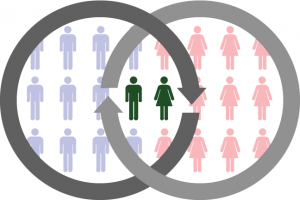A Successful 7th Generation Family Company
This is a guest post from old friend Jim Monk. Jim is a Texan by way of MIT who now grows coffee in Hawaii. H also writes great travelogues. He sent me this, about a tour of the Crane Paper Company. I just had to share it.
—————————
Once in a while you get a chance to see something different. Yesterday was one of those. I am on a week long tour of New England – the home of the American Industrial Revolution.
We started out in Lowell, Massachusetts, where the American textile industry took a major leap forward. There we looked at the canal system that powered up to 175 mills at one time and where employment was up over 80,000 at its peak in the late 1800’s. From there we have visited an iron works, a shipyard, a museum dedicated to precision machine tools that enabled companies to manufacture products with interchangeable parts and, yesterday afternoon, a special paper company.
You may have used some Crane Paper company products when you have written nice notes to someone – Crane paper has been synonymous with quality and upscale for a long time. But the reality is you probably use a Crane Paper product every day, without even thinking about it.
Crane Paper
Since 1871, the Crane Paper Company has been the sole supplier of the paper for the US currency. However, “paper” is not quite correct. What the company supplies to the government doesn’t contain an ounce of tree in it – it is all cotton and linen, with nowadays a slight admixture of very special fibers made by the government in a special laboratory and handed to Crane to be poured into the batches of material that will be made into greenbacks.
Greenbacks first got their name in the early 1800’s when the federal government finally started producing bills to replace the banknotes then in circulation. “Banknotes” had been made by individual banks in various cities and states – hence the term banknote.
What we use now are no longer “banknotes”, even though we call them that. The federal government made its first notes with the backside of them all in green ink – at that time green was difficult to photograph well and was hard to obtain, so the government felt the green would help to keep the bills from being counterfeited.
Today, thanks to North Korea, our bills are a whole lot more sophisticated. It seems North Korea has been working on producing counterfeit $100 bills for some time to disrupt the American currency situation. An observant teller at a federal reserve bank noticed one bill that had a different feel than the others – and that was the first time the government knew about the new counterfeit bills. Eventually they traced them to North Korea, who then seems to have moved operations to Canada, where the percentage of counterfeit bills in circulation is far higher than in the US.
But American bills now have a nanotechnology woven into them as the latest round against counterfeiting – a whole concept that Crane developed. Our speaker said they have some 40 patents on the technology but they have withheld lots of information on how the technology is used – “tradecraft” — so no one else has been able to duplicate the new measures yet.
A special tape runs down the bills and has the interesting property that when you tilt the bill back and forth, you will see the image in the tape section move from side to side. Rotate the bill side to side, and the image will move up and down! And the image changes from a liberty bell to a “100” if the bill is a hundred dollar bill or the number of any other denomination it might happen to be. This is done with a whole series of 2 micron wide lenses that are looking at images down below them. The image you see is formed from hundreds of the lenses collecting bits of the images below them and compositing them towards your eyes.
The Present Mr. Crane
Now all of this was interesting, but for me the most interesting part of the presentation was the presenter, Doug Crane. He’s in his early 50’s, judging from appearances, has children in high school and college and has already retired. He came in to talk to us because he, too, went to MIT and just felt like talking to a bunch of MIT folks.
He said he is the seventh generation of his family to be involved (!) with the Crane Paper Company. It is a privately held company – his family are the sole owners of the only company that has made our currency paper for over 140 years.
Towards the end of his talk his cell phone started ringing where it had been placed next to the computer that was controlling his presentation images. He looked at it, looked sheepish and said, “Sorry, I have to take this one.” We heard him arrange that the person would come to the place where we were to pick him up.
When he hung up, he said that was his Dad, who was coming to take him out to dinner because it was his birthday that day.
Now just how many seventh generation, successful company owners do you know? Especially who seem quite modest, clearly knowledgeable about their business, plainly dressed and being picked up by their father that evening after coming in to give a talk to some strangers on their birthday?
When he left, he slung a back pack over his shoulder on his way out. If America had more companies run by folks like that, we would be doing very well.
My tour is a success. I hope your day is as well, Jim.
————————–
It is now, Jim, many thanks.


 In my
In my  Right after
Right after  Michael Lewis’s new book
Michael Lewis’s new book  Nobody, it seems, wants to talk about one of the most important dynamics of the modern workplace: Men quite often don’t trust women, and women with comparable frequency don’t trust men. The breakdown of trust is especially common when the male is a manager and the female is his subordinate. Burdened by stereotypes, myths and other hidden assumptions about female employees, he doesn’t trust her to get the job done. Having repeatedly been marginalized by her male bosses and male co-workers, she adapts in ways that exacerbate the breakdown in trust.
Nobody, it seems, wants to talk about one of the most important dynamics of the modern workplace: Men quite often don’t trust women, and women with comparable frequency don’t trust men. The breakdown of trust is especially common when the male is a manager and the female is his subordinate. Burdened by stereotypes, myths and other hidden assumptions about female employees, he doesn’t trust her to get the job done. Having repeatedly been marginalized by her male bosses and male co-workers, she adapts in ways that exacerbate the breakdown in trust. In my last post,
In my last post,  Do your eyes glaze over at that title? Mine do. I always click on such titles, but am usually disappointed when I get what feels like low-content or high fluff-quotient material. So I set out to tighten up the perspective.
Do your eyes glaze over at that title? Mine do. I always click on such titles, but am usually disappointed when I get what feels like low-content or high fluff-quotient material. So I set out to tighten up the perspective. If that title reminds you of a Bill Clintonism,
If that title reminds you of a Bill Clintonism,  I wrote a good blog post at this time seven years ago, and haven’t improved on it yet. Here it is again.
I wrote a good blog post at this time seven years ago, and haven’t improved on it yet. Here it is again.